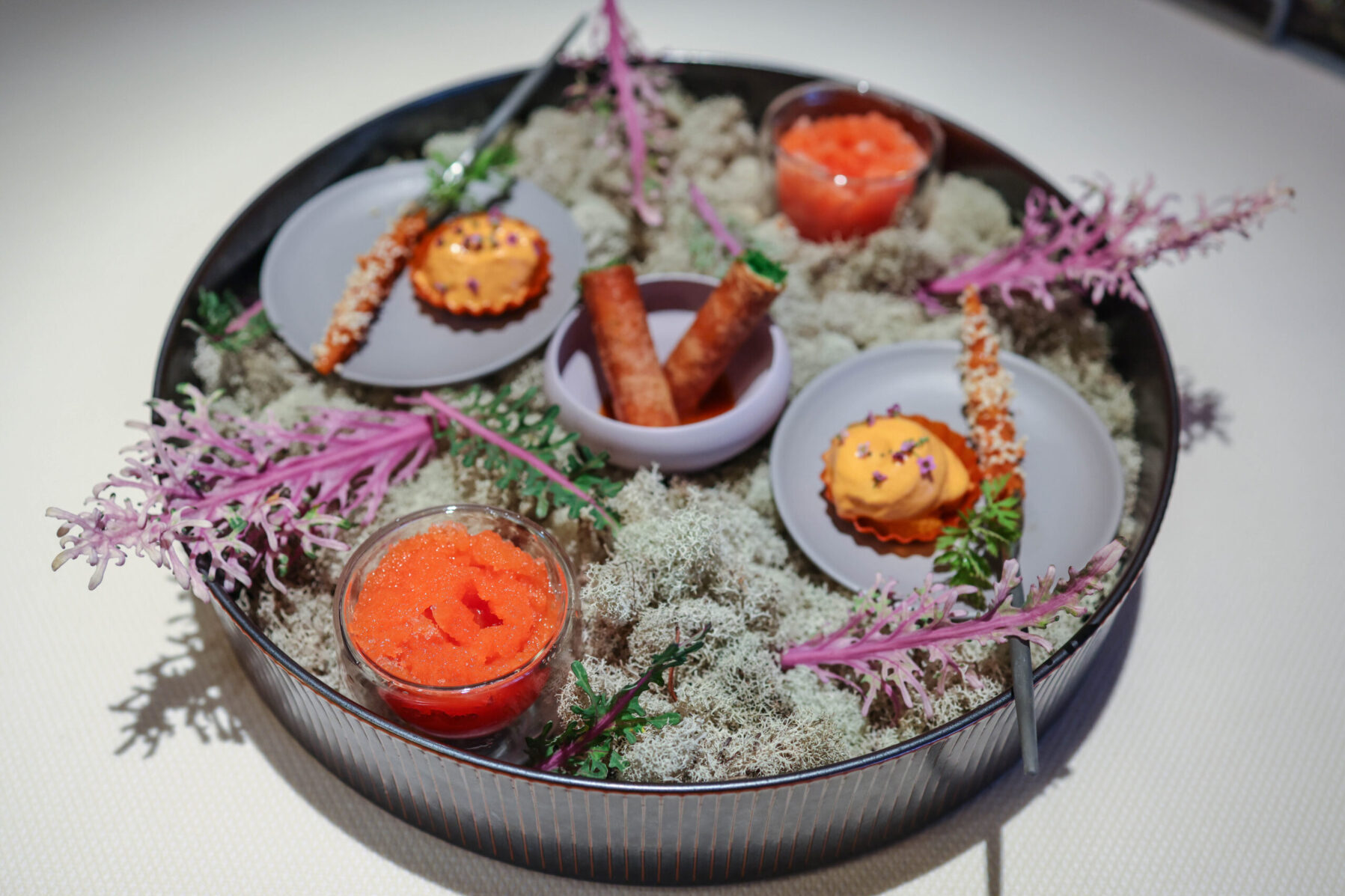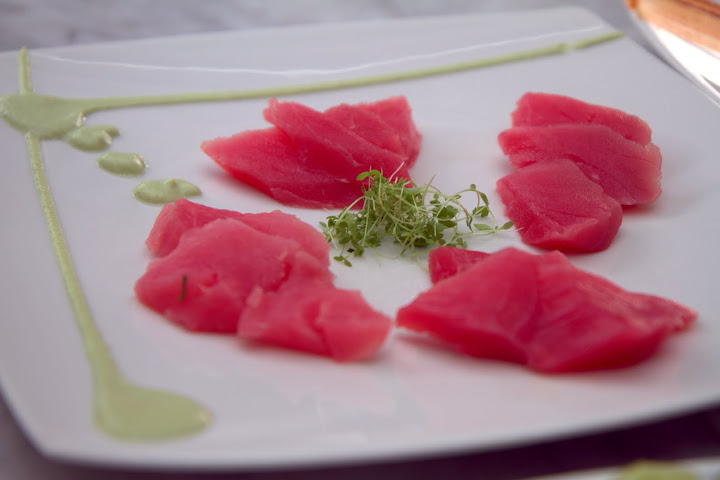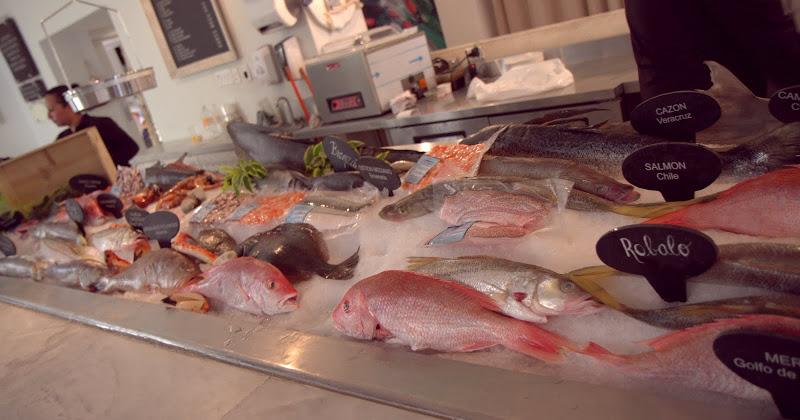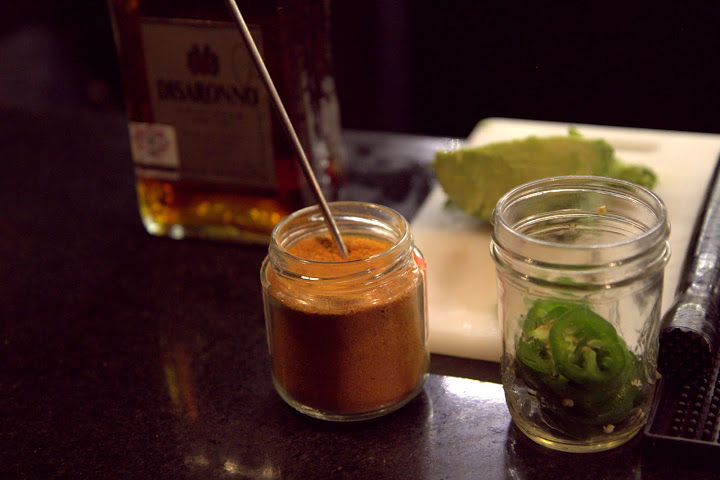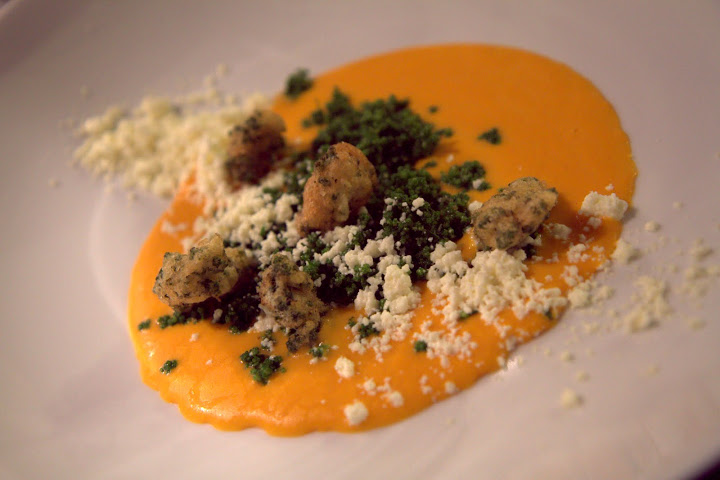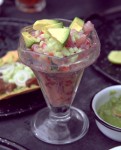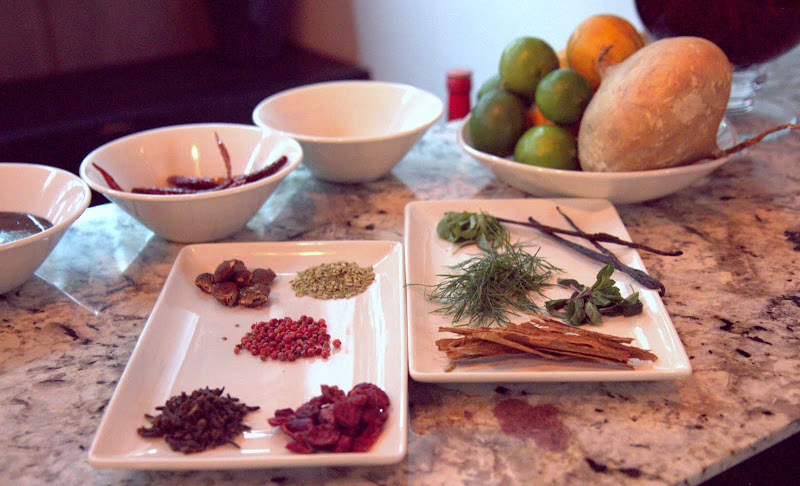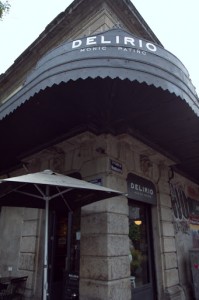Mexico City’s (MX) dining scene is HOT. Gorgeous diners smoke cigarettes while dining on sashimi platters accented by Mexican flavors from chiles to avocado. Experimentation – the likes of which is far advanced even from what one finds in Mexico’s second largest city, Guadalajara – reinvents classic Mexican flavors through an international, cosmopolitan lens (in San Francisco, the recent arrival of La Urbana from MX owners, brings a snapshot of what is happening in MX to SF).
Flying in to MX, the massive expanse of a city of nearly 20,000 million people looks like a dense maze of traffic covered in thick, brown smog. But on the ground there’s a surprising amount of parks, tree-lined streets, European-influenced architecture and impossibly chic restaurants. Some of the most raved about restaurants, like Pujol from CIA-trained Chef Enrique Olvera, reach gastronomy magic, working wonders with larvae and insects, frog legs and squash blossoms.
MX street food and markets are fascinating, full of gourmet treasures. Here one can explore all the complex regions of Mexico and the varying dishes and specialties from around the country in one market. In this metropolis of a city, “New Mexican” reaches its most realized state, reinventing Mexican cuisines for the next generation.
Far more than in Guadalajara and vastly different from traditional, romantic towns like Oaxaca, Mexico City is the culinary future of Mexico, where the world’s cuisines collide, informed by Mexican ethos, even as other Mexican culinary capitals keep tradition alive. Both are important. Despite my many travels to Mexico, I feel as if I hadn’t fully experienced the possibilities of Mexican cuisine until I visited Mexico City.
Exploring mezcal distilleries in Oaxaca with the fantastic Los Siete Misterios Mezcal, we spent a few days in MX. There I judged a cocktail competition involving bartenders from NY, Toronto and Mexico City using Los Siete Misterios mezcals, while also visiting restaurants and cocktail bars. Mexico City is on the cusp of an artisanal and classic cocktail scene. There are up-and-coming bartenders with a fine sense of balance, like David Mora and Rodrigo Martinez Trejo, honing craft in some of the city’s best bars.
One thing I noticed at cocktail bars here is masking alcohol is common. The best drinks often tasted like complex layers of fruit and herbs… with little booze kick. While emerging craft bartenders in MX are using a fascinating mix of Mexican herbs, chiles, fruits and so on, veering away from sweet or giant martini glasses to classic glassware and balance, there’s still a big gap between what we see across the US or major cocktail cities internationally in terms of a broad and deep grasp of classic technique or understanding (or even much of a selection) of brown spirits, from whiskies to brandies. But Mexico City masters agave spirits and an innovative use of produce, so it’s only a matter of time before the international cocktail renaissance fully takes hold here.
Few have done more initially to usher in this renaissance than Limantour, with the tag line “Live the old new days.” Limantour advances the cocktail revival in MX, having just opened a second location. I visited both, one with an open storefront, warm glow and a bustling bar, the other, an intimate, upstairs lounge – both bars are relaxed yet sexy, serving elegant cocktails, including a San Francisco tribute, the hilariously-named San Francisco Homie, a rum recipe adapted from none other than 15 Romolo.
Aurora Roma in the Colonia Roma district – marked by a beetle sign – is a cocktail den graced with a long black bar and low, pressed tin ceiling. It was the site of the cocktail competition I judged.
Whether visiting pulque (viscous, milky, alcoholic drink made from fermented sap of agave plants) havens like Las Duelistas, or mezcalerias like El Palenquito, agave spirits are (of course) well represented across the city.
Here are dining and food recommends, from restaurants to bakeries, around the city:
QUINTONIL, Polanco
The best meal in my recent visit was the humble green structure housing Quintonil (which means amaranth leaf). Chef Jorge Vallejo, a young chef who comes from the aforementioned Pujol, showcases impeccable technique, indigenous ingredients and modern, unexpected combinations. Whether a clean cactus sorbet with burnt corn husk, or pork jowl marinated in achiote, each dish (paired with mezcal on my visit) was enlightened, highlighting the innovation and freshness that is Mexico City dining.
ROMITA COMEDOR, Colonia Roma
Romita Comedor is an impossibly cool spot. Up winding stairs in a 1900’s building above a clothing shop and salon, its high ceilings, black and white tiled floor, and massive, open window, combines Old and New World touches. The space is casual yet hip, serving delicious tacos, octopus and shrimp dishes, at mid-range prices.
Romita is a cocktail outpost for refreshing classics like Tom Collins, Negronis, and Caipirinhas, but also creative creations by bartenders like David Mora (who won the Los Siete Misterios cocktail competition I judged at Aurora Roma), like a bright blend of serrano chilies, mezcal, apple, lychee and cucumber, or a creamy Horchata de Aquacate blending Don Julio blanco with house horchata.
MONTAGU GASTRO WINE BAR, Del Parque Lincoln
Mexico City native Chef Rogelio Weber infuses dishes at intimate, glowing Montagu Gastro Wine Bar with international flair. Studying cooking in Barcelona, he’s cooked in London, New York and between Africa and Asia. His duck confit tostadas, black octopus tacos, mole amarillo, or chapulines (grasshopper) topped guacamole (a nod to Oaxaca) are comforting yet delicate. In addition, Montagu is a wine bar so expect a thoughtful array of wines from Mexico, South America and beyond.
SABOR AMOR, Colonia Roma
Sabor Amor is in a dreamy, multi-floored house with a terrace and dining rooms of different colors and themes, including a pink and creme-striped room that feels meant for high tea. It’s the most romantic setting of the places I dined, offering earnest service and generous, artfully designed dishes.
Besides serving Oaxaca’s ubiquitous guacamole dotted with chapulines (fried grasshoppers), Sabor sends out rich dishes like a round tower of whipped cheeses (“El Irreal”) layered with eggplant, red pepper, basil and tomatoes, accented by chile oil. The restaurant does best with its Italy-or-Spain-meets-Mexico dishes, such as a bacalao (salt cod) and huitlacoche (corn fungus) ravioli.
LA TRAINERA, Centro Historico
Impossibly hip La Trainera sports greenery growing on walls, a rooftop dining area, and mountains of fresh fish and seafood in a multi-floored mansion.
The aesthetic is as chic as the Hollywood-by-way-of-Mexico clientele. On the open-air top floor, everyone is (ironically) smoking as they dine on spanking-fresh sashimi. Raw tuna tostadas are a hit, a ubiquitous dish around MX, made popular by the restaurant Contramar. There’s a range of ceviches and tacos utilizing their impressive fish selection, but I found the sashimi and tostada menu sections offered the most gratifying dishes.
BOTTEGA CULINARIA, Condesa
A gourmand’s food shop, Bottega Culinaria stocks impeccable breads, cheeses, pastas, spirits, jams, sauces, cookbooks, and would be similarly at home in New York, San Francisco or Paris. It was a strong choice for French-style pastries and coffee in the leafy Condesa district.
DELIRIO, Zona Urbana Río Tijuana
With sidewalk seating evoking European cafes, atmospheric Delirio is a strong wine bar, cheese, charcuterie shop and all-day, casual cafe serving organic dishes for breakfast, lunch and wine hour. While no dish I had here was exactly memorable, the setting is, making it a worthwhile stop for gourmet foods and even a few select mezcals we can’t get in the US.
In addition, food markets shine in Mexico City, particularly the “chef’s market,” Mercado San Juan in the Centro Historico, offering foods and produce from across Mexico.
